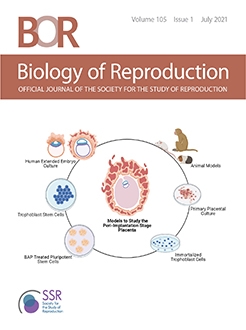It is very difficult to gain a better understanding of the events in human pregnancy that occur during and just after implantation because such pregnancies are not yet clinically detectable. Animal models of human placentation are inadequate. In vitro models that utilize immortalized cell lines and cells derived from trophoblast cancers have multiple limitations. Primary cell and tissue cultures often have limited lifespans and cannot be obtained from the peri-implantation period. We present here two contemporary models of human peri-implantation placental development: extended blastocyst culture and stem-cell derived trophoblast culture. We discuss current research efforts that employ these models and how such models might be used in the future to study the “black box” stage of human pregnancy.
Summary sentence
Human extended embryo culture and stem-cell-derived trophoblast cells offer new insight into peri-implantation stage placental development.
Graphical Abstract






